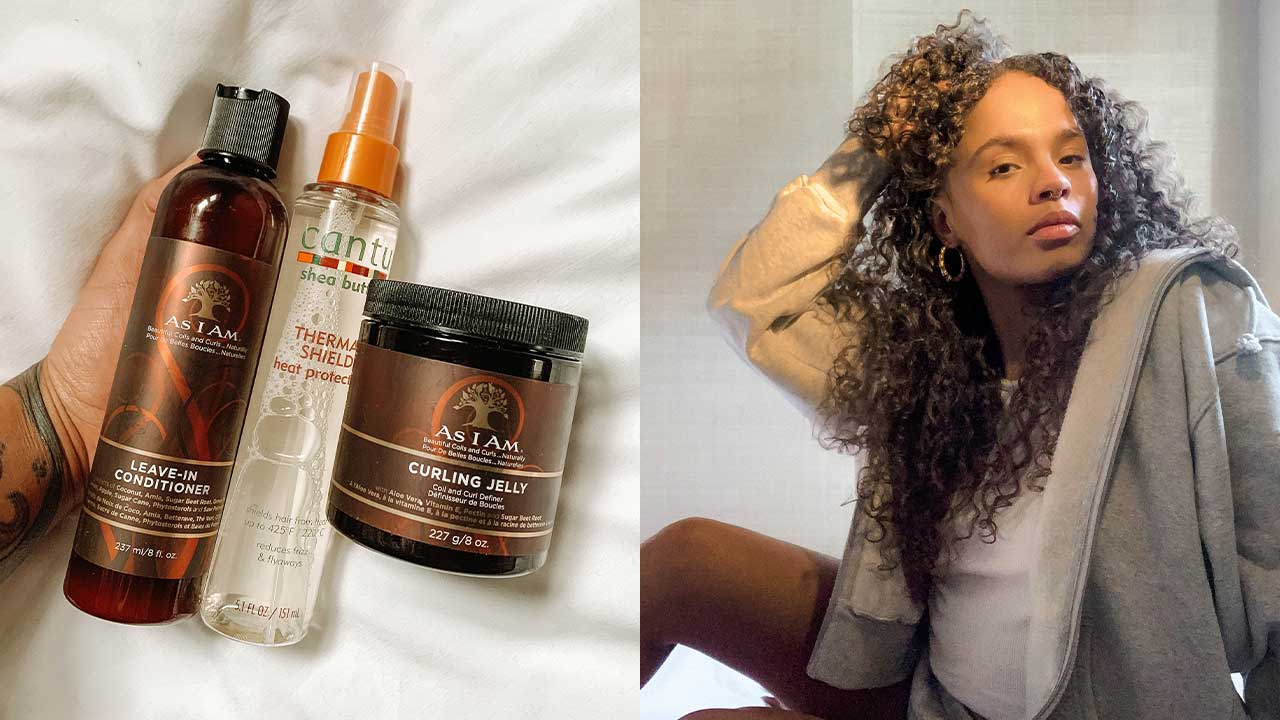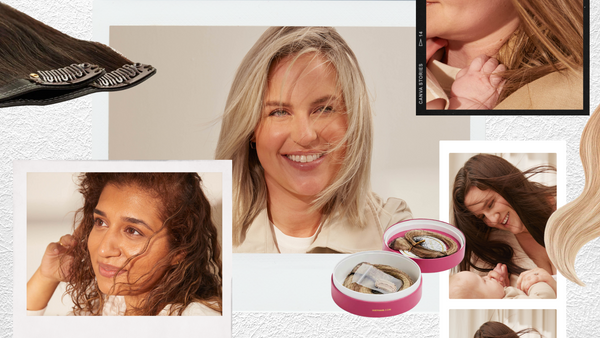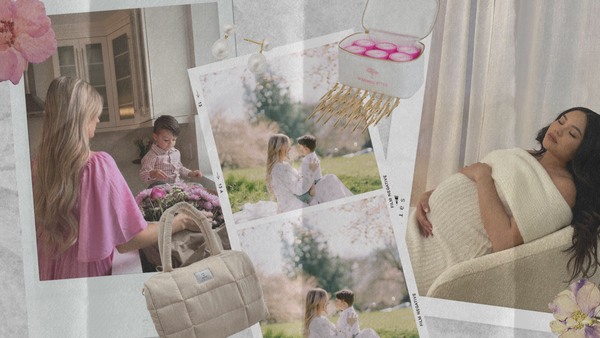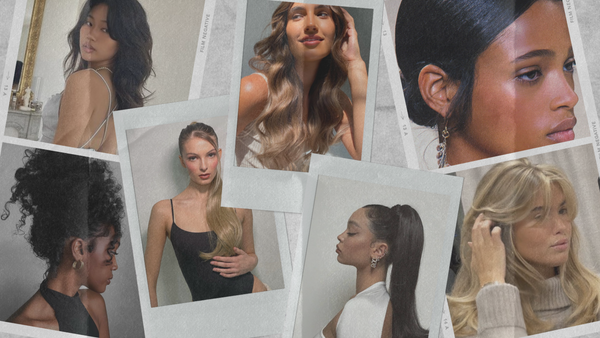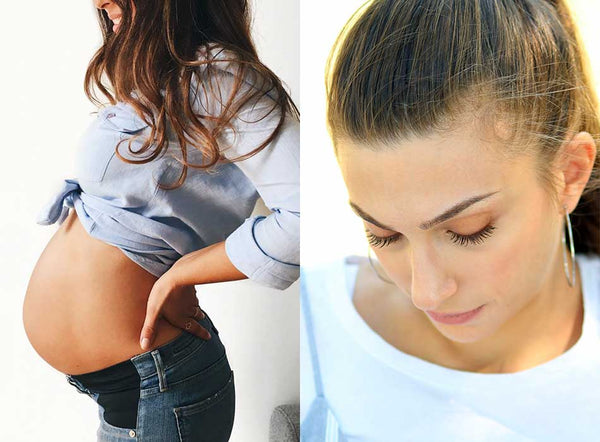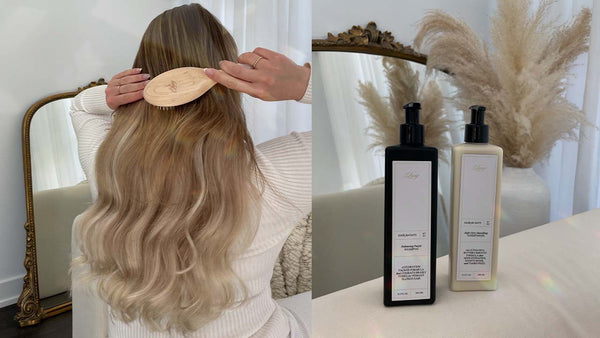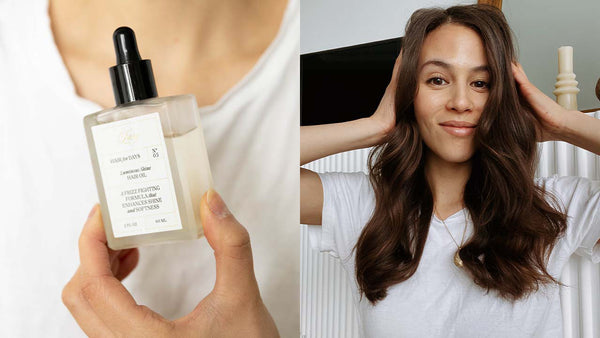The natural hair movement has led to many women of color embracing their natural curls and coils. For several decades, many women with curly and kinky hair types opted to use chemical relaxers to straighten out their locks. While there’s no shame in the relaxed hair game, many women with curly hair are now finding themselves rocking their hair just as it grows from their scalp. Here’s a few tips on how to transition to natural hair.

Why should you transition to natural hair?
Everyone has different reasons for transitioning to natural hair. For some women, embracing natural hair is a political statement, while for others, embracing natural curls and coils is a method of hair repair. It might be a good idea to transition if you have experienced damage due to using excessive heat or chemical relaxers on your hair. Or you just might want a break from styling your hair on a day-to day-basis, in which case protective styles may be the perfect fit for you. Transitioning to natural hair takes time and patience. Here are 10 tips to help you to achieve healthy natural hair.\
10 steps to transition to your natural hair
1. Determine your hair density
Many women make the mistake of getting overly hung up on their hair types, and don’t familiarize themselves with their hair density. While the hair typing system is useful in that it provides basic insight on your curl texture, it is only the first step in choosing the best hair products to get you started on your healthy natural hair journey. Once you determine your hair density, you will have a wide range of specific products to choose from for your hair type.
Hair density refers to the amount of hair strands and cuticles that your hair is comprised of.

If your hair is made up of thinner strands, then you have low density hair. Moreover, if after washing your hair, you can easily see your scalp, you have low density hair. Volumizing shampoos, conditioners and styling products are the perfect option for healthy low density hair.
If you have medium density hair, you can probably guess that your hair strands fall in between thick and thin. While this hair density is the harder of the three to determine, if you can see your scalp after parting it, then you have medium density hair. Medium density hair thrives with both volumizing and softening products such as creams, butters and gels.
Last, but certainly not least, if you have high density hair, you have thick hair strands and you have to work a little harder to see your scalp. Products such as creams, butters and gels are a must-have in your hair regimen if you have high density hair.
2. Determine your hair porosity
Once you have determined your hair density, the next most important step when transitioning to natural hair is figuring out your hair porosity. Hair porosity refers to your hair’s ability to absorb moisture.
Low porosity hair is made up of tightly packed cuticles of hair. If water tends to sit on top of your hair when wet, this means you have low porosity hair. Because low porosity hair is so resistant to water, it must be washed more frequently to prevent product buildup. Jojoba and coconut oils are perfect for naturalistas with water-resistant low porosity hair.

Medium porosity hair requires significantly less styling effort, as the hair cuticles aren’t packed together super tightly or significantly separated from each other. Luckily, if you have medium porosity hair, you can pick up pretty much any styling products formulated for natural hair.
High porosity hair is typically damaged and highly separated from the cuticle. This usually occurs when hair is damaged due to excessive use of hair dyes and chemical relaxers. High porosity hair struggles to maintain moisture. If you have high porosity hair, you should use products such as leave-in conditioners, moisturizers and sealants.
If you’re still confused on which hair porosity you have, the tried and true ‘H2O Test’ will give you the answers you need. Simply pour a glass of lukewarm water and place a clean strand of your hair into the glass. If your hair sits at the top of the glass, you have low porosity hair. If your hair sinks to the middle of the glass you have medium porosity hair. And you guessed it - if your hair sinks to the bottom of the glass, you have high porosity hair.
3. Use little to no heat
Excessive heat can lead to extremely dry hair, especially during winter months and may cause long-lasting damage to your curl texture. Type 4 hair textures are particularly drier than other hair textures and too much heat can strip your outside protective hair layers of the keratin proteins that it needs to be healthy.

4. Wear hair extensions
We may be a little biased here, but wearing hair extensions is a great way to protect your natural hair when you're transitioning.
Clip-in hair extensions, wigs and sew-ins give you a reprieve from the time-consuming hair styling that often comes with being a naturalista. Simply leave out the front portion of your hair when wearing hair extensions and braid the remainder of your hair for optimal protection. Use the front section of your hair or “leave out” to cover the wefts of your extensions.
The best part about wearing clip-in hair extensions is that they aren’t permanent. When you’re a naturalista who rocks clip-ins, after a long day, you can simply unclip them and moisturize and massage your scalp before you go to bed every night. Moisturizing and massaging your scalp on a daily and/or nightly basis stimulates hair growth. One of our favorite hair-growth stimulating oils is the Tropic Isle Living Jamaican Black Castor Oil.
5. Regularly trim your hair
As we mentioned earlier, using excessive heat or chemical treatments such as relaxers can cause damage to your hair that can last for years if not treated properly. While hair obviously grows from the roots and not the ends, trimming your hair gradually helps to get rid of damaged hair strands. We recommend trimming your hair monthly at the bare minimum, which will allow for your curly hair strands to grow back.
After a fresh trim, you will immediately notice that your hair actually looks fuller and thicker from root to tip, without all the unhealthy, thinning strands.
Top tier Deva Certified Stylist, Emily Weiser advises to consider the “big chop,” which refers to cutting off practically all your hair and rocking a super short cut, if your curl pattern has been severely damaged by chemical relaxers or heat.
6. Protect your hair when sleeping
Protecting your hair while sleeping is a crucial part of the natural hair care process. Cotton pillowcases often dry out natural hair, especially if you are one who tends to toss and turn at night.
This is precisely why you should opt to wear a silk scarf, headband or bonnet to protect your hair while you sleep. You should also consider swapping out that cotton pillowcase for a silk one. While these sleep accessories do not always sound like the most glamorous options, you will be rewarded when you wake up with sleek and soft locks.
7. Develop a moisturizing regimen
No matter what curl type you may have, developing a robust moisturizing regimen is the key to achieving healthy natural hair. The drier your hair is, the more susceptible it is to breakage, therefore you should develop a routine that will allow you to retain your hair growth.
Popular methods such as the LCO (liquid, cream, oil) or and LOC (liquid, oil, cream) methods are two effective ways to care for low and high porosity hair respectively. Popularized by natural hair online influencers, both methods provide textured hair with the hydration it needs. The difference between the efficacy of the two methods all boils down to the order in which you apply them.

The LCO Method (Liquid, Cream, Oil Method): While the order in which you apply these products to your hair may seem insignificant, it makes all the world of difference. In the LCO Method, you must first apply a liquid in the form of water or a water-based product to your hair. Next, apply a moisturizing cream (which also contains water) which helps to lock in the hydration in your hair. Finally, apply a natural oil to your hair. We recommend the LCO Method to those who have low porosity hair.
The LOC Method (Liquid, Oil, Cream Method): The LOC method consists of first, applying a liquid such as water or a water-based product to your hair. The next step is sealing the product into your hair with oil. Finally, apply a butter or cream to seal the product into your hair. The LOC Method is perfect for those with high porosity hair.
8. Detangle on a regular basis
Because textured hair is so curly, it is inevitably prone to some degree of tangling. This is why an essential practice in the natural hair regimen is to regularly detangle your hair.
Textured hair types are again more prone to breakage, which is why we recommend detangling your hair only when wet, which makes wash days the perfect time to detangle. On wash days, section off your hair and apply a “pre-poo” or pre-shampoo treatment to your hair such as the African Pride Moisture Miracle Aloe & Coconut Water Pre-Shampoo. This will help to detangle and moisturize your hair prior to shampooing, which will help to cut down your wash time. Seamlessly brush out your tangles with our Loop Brush for soft, knot-free hair.

9. Consider using perm rods
Perm rods are the perfect training wheels for those who are newly transitioning to natural hair. Simply section off your hair and roll each perm rod from your ends all the way up to your roots to achieve bouncy, voluminous curls. Once you’ve rolled rods around your entire head, wrap a silk scarf around your hair and let it set for eight to 10 hours. Once taken down, finger comb your hair with a little moisturizer for a more effortless look.
“In terms of transitioning from relaxer to natural hair, the use of perm rods are helpful to match textures,” Weiser explains.

10. Track your progress
Tracking your progress along the natural hair transition journey is the best way to know what practices are working and what needs to be changed. We recommend keeping a hair journal, putting calendar reminders on your phone and regularly taking pictures to track hair growth and health.
Transitioning to natural hair can be challenging, but will prove rewarding if you follow these steps and track your progress along the way. Weiser advises to be patient, kind to yourself and ready for one of the most liberating experiences of your life when transitioning to natural hair.
Shop our favourites below:
